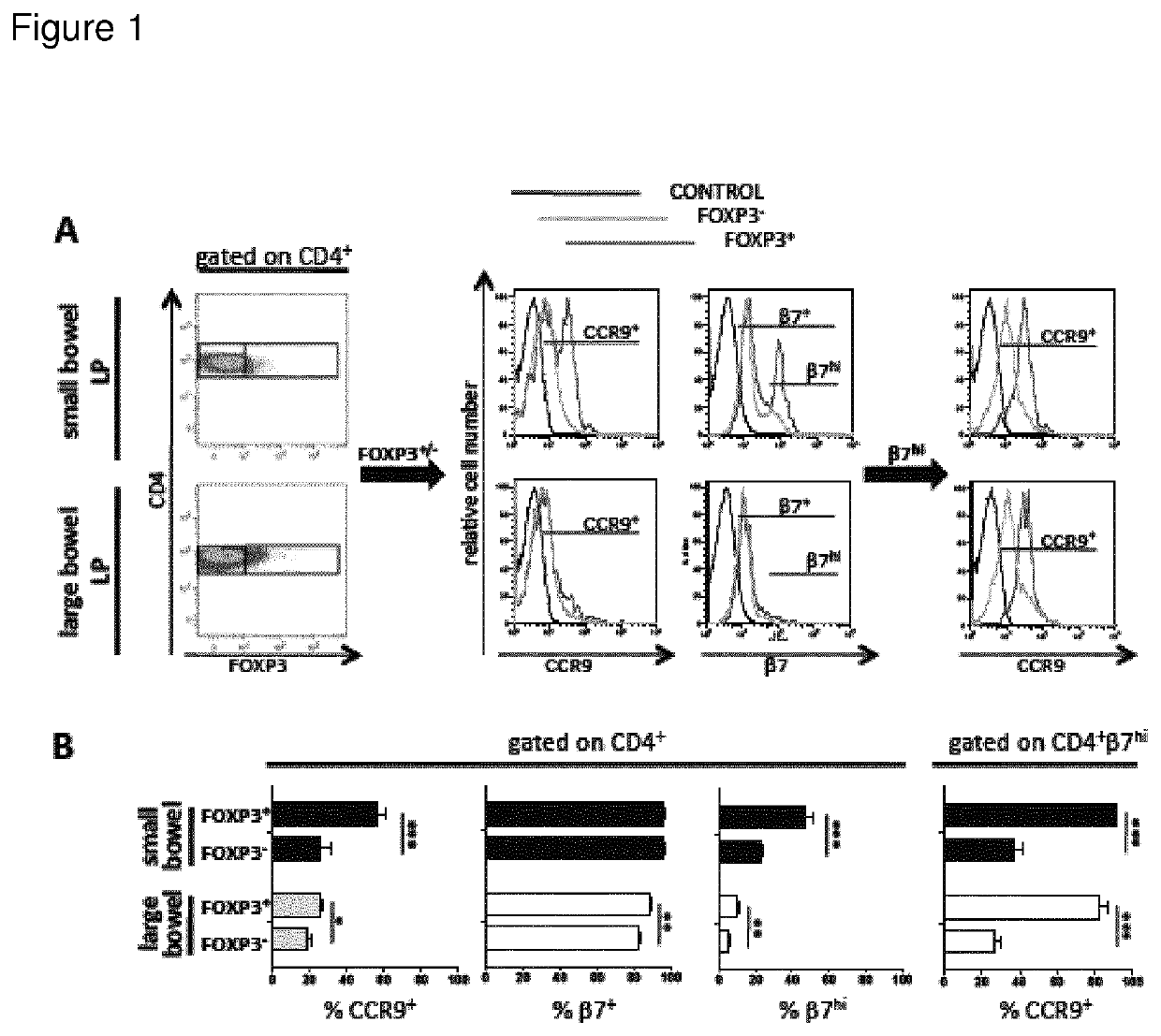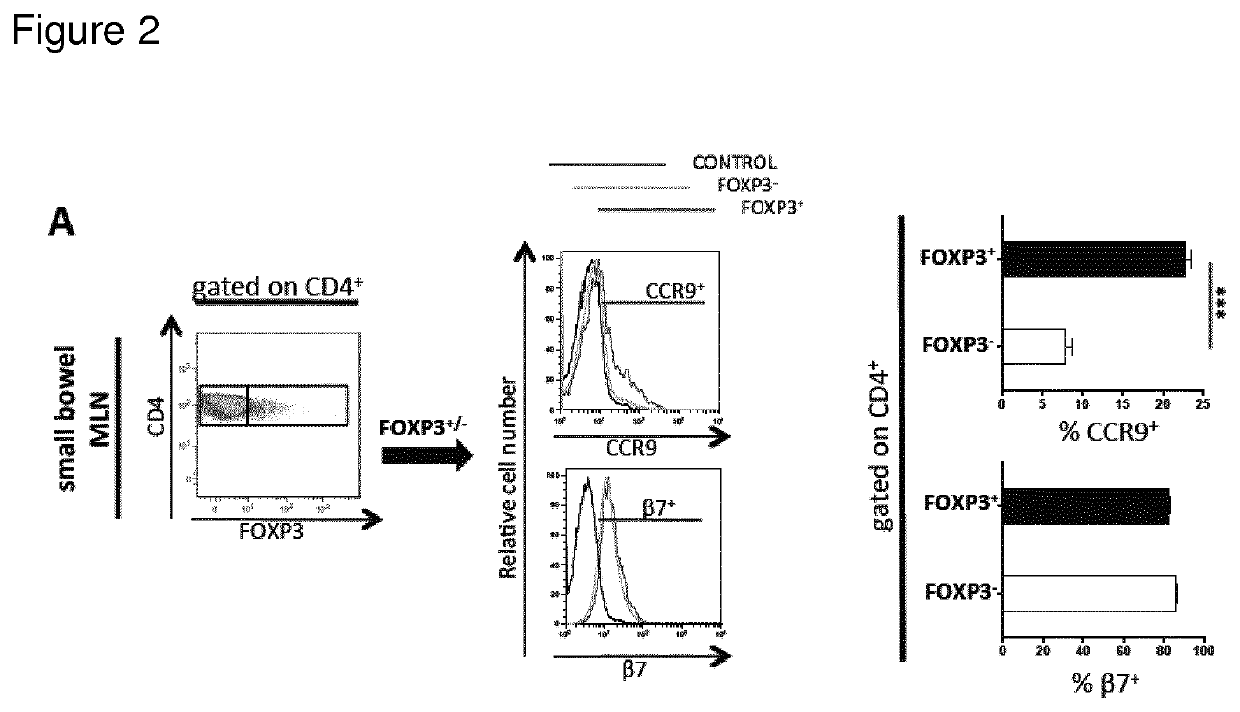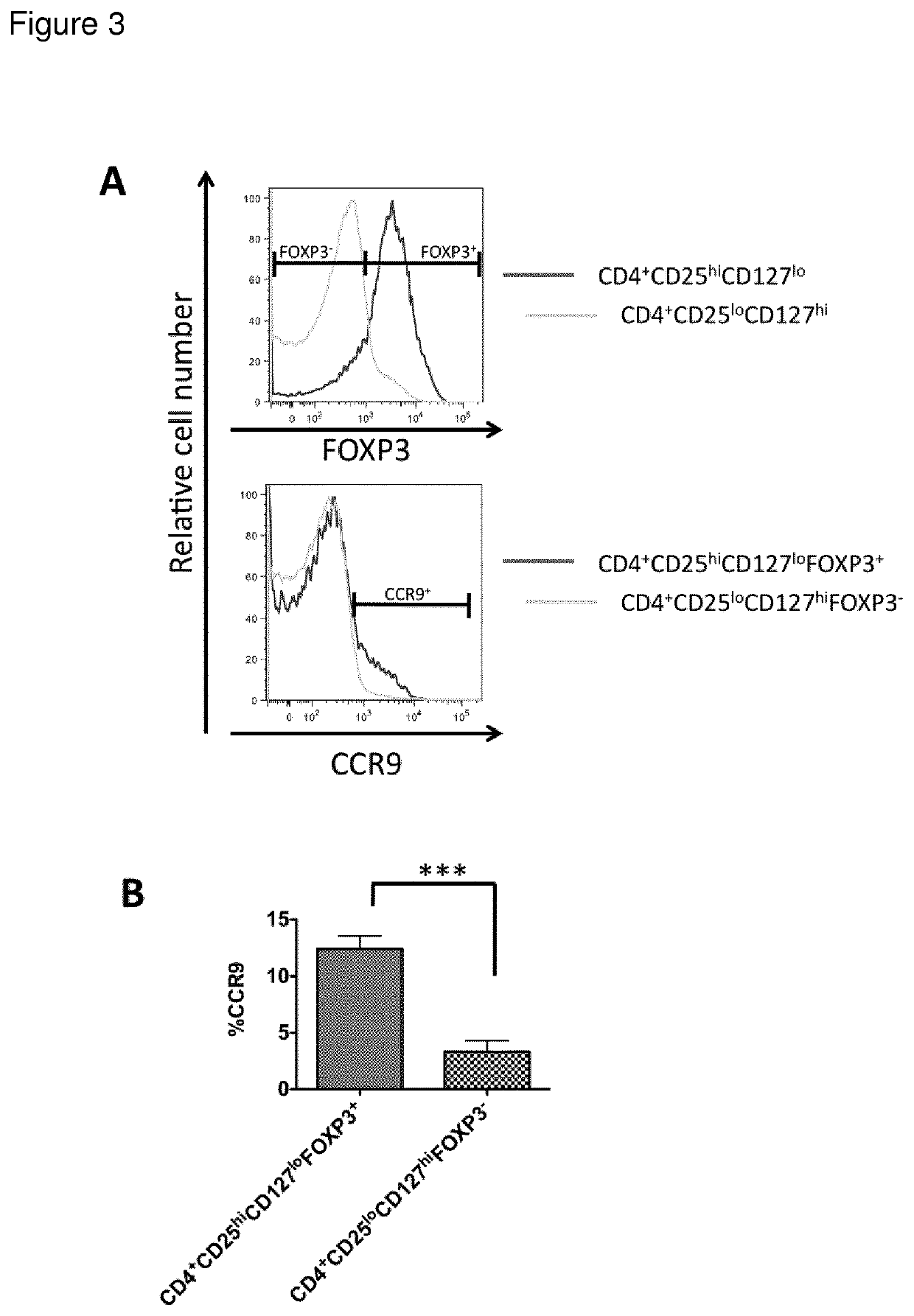Regulatory T-cells for use in the treatment of inflammatory disorders of the human gastrointestinal tract
a technology of gastrointestinal tract inflammation and t-cells, which is applied in the field of cellular immunotherapy with tregs, can solve the problems of difficult to attribute ibd immunopathogenesis to any specific functional or numerical defect of tregs themselves, and the tendency to develop intra-abdominal fistulas,
- Summary
- Abstract
- Description
- Claims
- Application Information
AI Technical Summary
Benefits of technology
Problems solved by technology
Method used
Image
Examples
Embodiment Construction
[0015]The present invention addresses the above-mentioned needs. The present invention aims to identify Treg cells with unique characteristics suitable for the above-mentioned uses, and particularly selected for treatment of inflammatory and autoimmune diseases of defined tissues relating to the gastrointestinal tract.
[0016]The present invention provides Treg cells with unique characters suitable for the above-mentioned use.
[0017]The present invention is based on the findings that specific homing receptor expression patterns can be used to identify regulatory T-cells in peripheral circulation as starting materials for therapeutic composition. The specific homing receptor expression pattern varies from tissue to tissue, but it is contemplated that the nature of the signatures (expression pattern) is the same, irrespective of the diseased tissue in question. Thus, the present invention is based on the surprising findings that e.g. Crohn's disease is not a disease defined by a deficien...
PUM
| Property | Measurement | Unit |
|---|---|---|
| stability | aaaaa | aaaaa |
| weight loss | aaaaa | aaaaa |
| distances | aaaaa | aaaaa |
Abstract
Description
Claims
Application Information
 Login to View More
Login to View More - R&D
- Intellectual Property
- Life Sciences
- Materials
- Tech Scout
- Unparalleled Data Quality
- Higher Quality Content
- 60% Fewer Hallucinations
Browse by: Latest US Patents, China's latest patents, Technical Efficacy Thesaurus, Application Domain, Technology Topic, Popular Technical Reports.
© 2025 PatSnap. All rights reserved.Legal|Privacy policy|Modern Slavery Act Transparency Statement|Sitemap|About US| Contact US: help@patsnap.com



